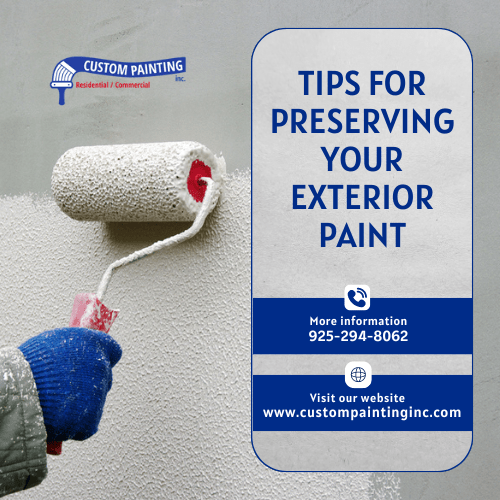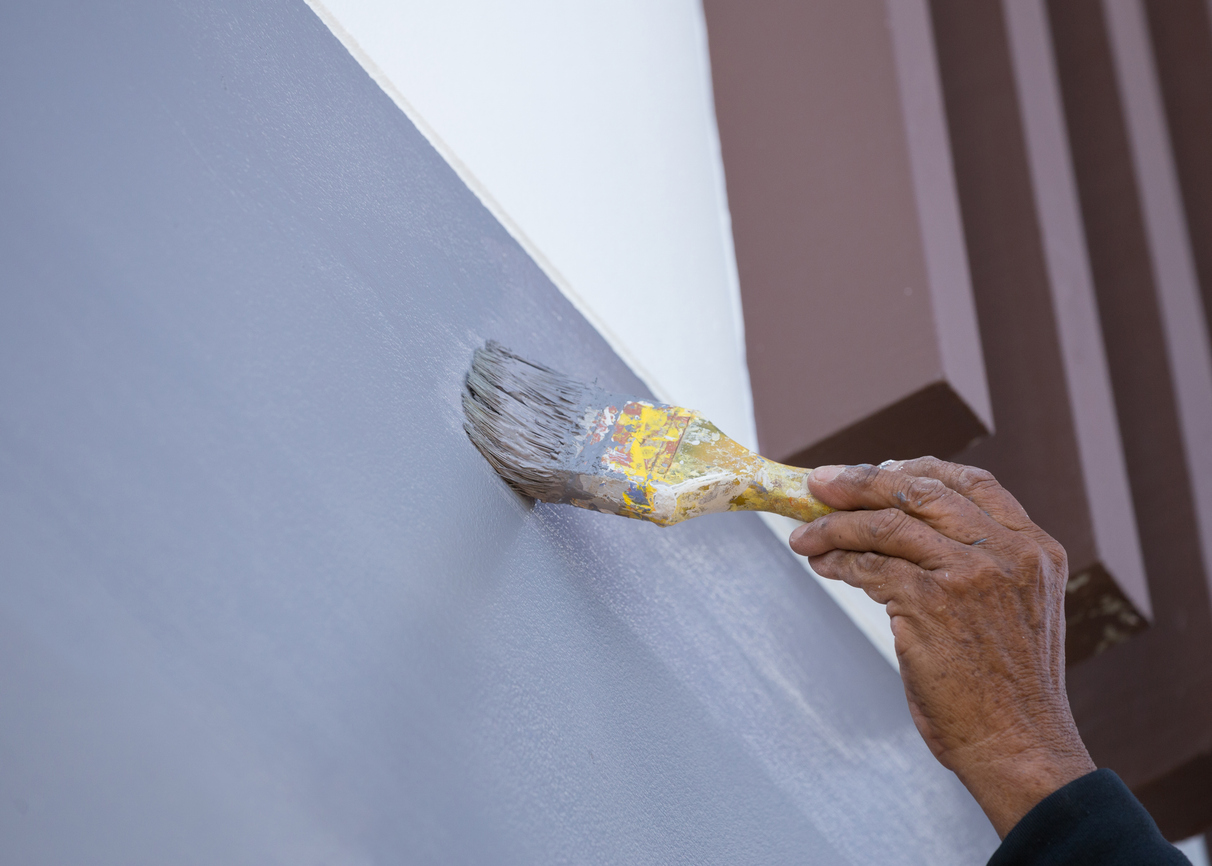Hiring the best painters is an excellent investment because they can completely transform your home’s exterior. However, since painting is a significant expense, protecting and maintaining the paint job is crucial to avoid needing another repaint too soon. As a homeowner, you are responsible for keeping your house looking its best.
Luckily, maintaining the exterior doesn’t have to be complicated. By following some simple steps, you can keep your paint looking fresh and vibrant, saving you time and money in the long run.
1. Pressure wash.
Pressure washing is a great way to remove even the most stubborn dirt, grime, caked-up mud, mold, mildew, and any loose paint from your home’s exterior. It’s like giving your house a refreshing bath, revealing its true color, and preparing it for a fresh coat of paint if needed.
You’ll need a pressure washer, which you can rent or buy, and possibly some cleaning solutions for tough stains. Also, wear protective gear, like gloves and goggles, and be cautious with high-pressure water, as it can be strong enough to cause injury.
Here’s how to use a pressure washer:
- Connect the pressure washer to a water source and test it on a small area first.
- Begin at the top of the wall and work your way down, holding the nozzle at a slight angle.
- Maintain a safe distance to avoid damaging the surface, usually around 3-4 feet away.
- Move the washer in smooth, overlapping strokes to ensure it is even clean.
2. Cut back the landscaping.
Not only can overgrown greenery reduce your home’s curb appeal, but it can also damage the siding if left for too long. The branches can rub on the paint, and plants that are too close can trap moisture against the siding, leading to peeling paint and mildew growth.
You can prevent this by cutting the shrubs and hedges pressing against your home’s sides. You can also trim vines and other climbing plants that may have crept upon them. Doing this will prevent damage from occurring and can help avoid discoloration on the siding as well.
Here are a few tips to help:
- Aim to keep a clearance of at least a foot between plants and your home’s exterior to ensure good airflow and prevent contact.
- Use pruning shears for small branches and hedge trimmers for larger bushes.
- Inspect and trim your landscaping at least once a season, especially in spring and fall when growth is most vigorous.
Keeping your landscaping well-trimmed not only protects your paint but also enhances the overall appearance of your home.
3. Make repairs to the siding.
Keeping your siding in good shape is crucial for a smooth surface that paint can adhere to properly. This not only improves the look of your home but also helps protect it from the elements. Ignoring these problems can lead to bigger issues, like insect infestations or water damage, which can cause the wood to rot and compromise your home’s structure.
To repair damaged siding, you may need a siding removal tool to access and fix the problem area. Look for issues like cracks, holes, loose boards, or rotting wood. These are all signs that repairs are needed before painting.
If necessary, you’ll need a pry bar, hammer, nails, wood filler, sandpaper, and replacement siding. Here’s how to repair it:
- Carefully remove any damaged siding with a pry bar.
- Use wood filler for small holes and cracks. For larger damage, replace the entire section of the siding.
- Sand the repaired area until it’s smooth and level with the surrounding siding.
- Apply a primer to the repaired areas to ensure the new paint adheres properly.
4. Clean the gutters.
Gutters are crucial for directing rainwater away from your roof and foundation, preventing potential damage. However, if they become clogged with leaves and debris, they can’t do their job properly, which can lead to problems like water damage to your siding. Clogged gutters can cause water to overflow, potentially leading to rot, peeling paint, and structural issues.
To avoid this, cleaning your gutters at least twice a year is essential, especially during the fall and spring. If trees surround your home, consider checking them more frequently. You can clean the gutters yourself or hire a professional to ensure they’re clear and functioning correctly.
If you choose to do it yourself, you’ll need a sturdy ladder, work gloves, a small scoop, a bucket, and a garden hose. To clean the gutters:
- Safety first—always make sure the ladder is secure and have someone spot you if possible.
- Start by scooping out leaves and debris from the gutters.
- Use the garden hose to flush out any remaining dirt and check for blockages in the downspouts.
Check and clean your gutters at least twice a year, preferably in the spring and fall. To reduce debris buildup, consider installing gutter guards.
5. Protect against sun exposure.
Prolonged sun exposure can cause your exterior paint to fade or discolor. Applying a high-quality exterior paint with UV protection is crucial to shield your home from the sun’s damaging rays. Consider adding a clear protective sealant for areas where the sun hits directly for extra defense against fading and damage.
6. Avoid harsh chemicals.
When cleaning your home’s exterior, avoid harsh chemicals that could strip the paint or cause discoloration. Instead, use mild detergents or specialized paint-safe cleaners. Often, a low-setting pressure washer can effectively remove dirt and buildup.
7. Touch up as needed.
Keep an eye on high-traffic areas or surfaces prone to wear and tear. Touching up these spots promptly helps maintain a consistent, fresh look and extends the life of your paint job. To make touch-ups easy, follow these tips:
- Store some leftover paint for quick touch-ups.
- Regularly check door frames, windowsills, and other high-traffic areas.
- Use small brushes for detailed work and to blend touch-ups seamlessly.
8. Perform maintenance every season.
Do not wait for spring to clean and maintain your exterior paint. You can do essential maintenance tasks for every season to keep your paint looking pristine.
- Spring: This is the perfect time to inspect your home for any damage that might have occurred during the winter. Look for signs of wear and tear, and clean surfaces to remove any dirt or grime that accumulated over the colder months.
- Summer: The sunny weather makes it ideal for repainting if needed. Protect your paint from sun damage by using high-quality, UV-resistant paint.
- Fall: Clear leaves from your yard and gutters to prevent clogs and prepare your home for winter. This is also an excellent time to check your roof and siding for any issues.
- Winter: Keep an eye out for mold and moisture problems, which can occur due to increased indoor humidity or leaks. Ensure proper ventilation and consider using a dehumidifier to manage moisture levels inside your home.
9. Don’t delay repainting.
If you notice significant wear, fading, or damage to your home’s exterior paint, don’t delay repainting. Fresh paint not only improves your home’s appearance but also provides essential protection against the elements.
Conclusion
Regularly maintaining your home’s exterior is key to keeping it looking great and protecting it from the elements. By following these simple tips, you can preserve your paint and avoid costly repairs.
If you find that your home needs a fresh coat of paint or a professional touch, don’t hesitate to contact Custom Painting Inc. Our experts are ready to help you bring out the best in your home’s exterior! Call us at 925-294-8062 to schedule an appointment.



